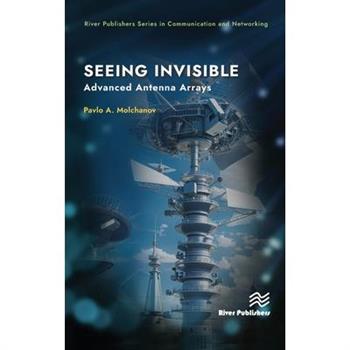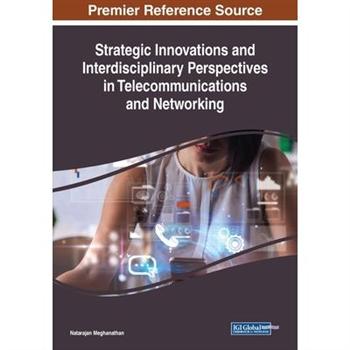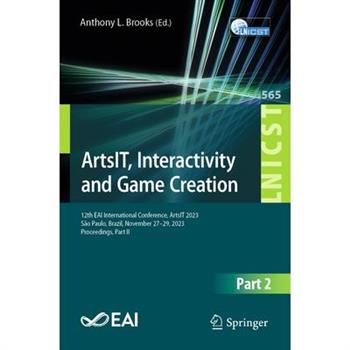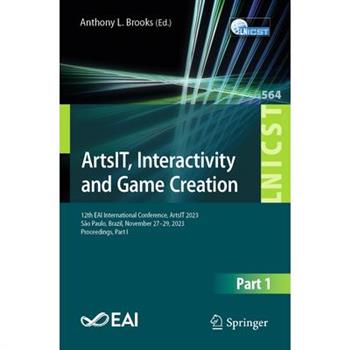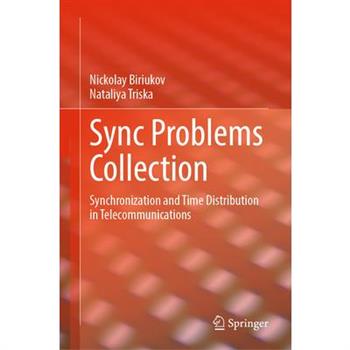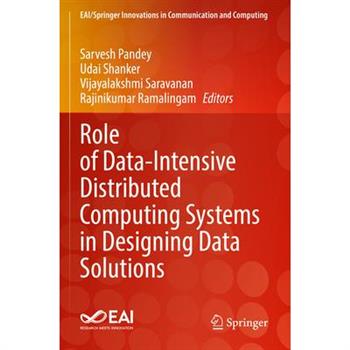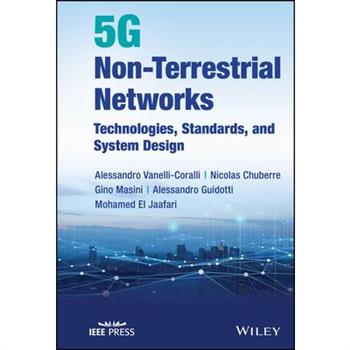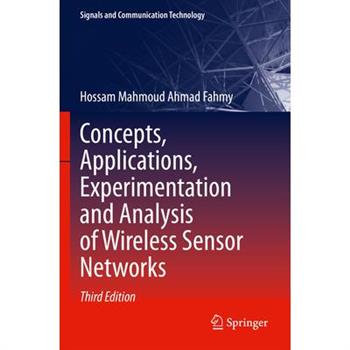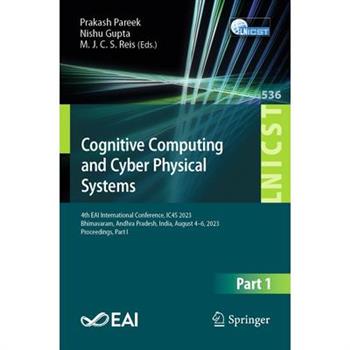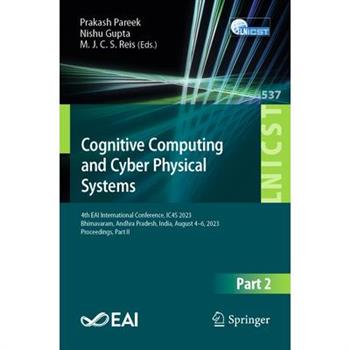Green Information and Communication Systems for a Sustainable Future
Green Information and Communication Systems for a Sustainable Future covers the fundamental concepts, applications, algorithms, protocols, new trends, challenges, and research results in the area of Green Information and Communication Systems. This book provides the reader with up-to-date information on core and specialized issues, making it highly suitable for both the novice and the experienced researcher in the field.The book covers theoretical and practical perspectives on network design. It includes how green ICT initiatives and applications can play a major role in reducing CO2 emissions, and focuses on industry and how it can promote awareness and implementation of Green ICT. The book discusses scholarship and research in green and sustainable IT for business and organizations and uses the power of IT to usher sustainability into other parts of an organization.Business and management educators, management researchers, doctoral scholars, university teaching personnel and policy makers as well as members of higher academic research organizations will all discover this book to be an indispensable guide to Green Information and Communication Systems. It will also serve as a key resource for Industrial and Management training organizations all over the world.
Research Advances in Network Technologies
There is a need to keep track of advancements related to the network technologies and further investigate several research challenges to overcome for the ease of users. With this goal, the book provides most recent and prominent research works have been done related to the network technologies.
Vehicular AD Hoc Networks
Vehicular Ad Hoc Networks focuses on recent advanced technologies and applications that address network protocol design, low latency networking, context-aware interaction, energy efficiency, resource management, security, human-robot interaction, assistive technology and robots, application development, and integration of multiple systems.
Telecom Extreme Transformation
The extreme transformation from a traditional Communication Service Provider (CSP) to a Digital Service Provider (DSP) status is covered in this book, specifically: Redefinition of the offerings of "connectivity services" to "digital services"; unification of legacy redundant networks into one; Redefinition of the measurements to customer-centric QoE for all digital and connectivity services; the Best-in-Industry processes and practices to ensure a sustainable network performance at a competitively operational efficiency; a Service-over-IP (SoIP) platform to enable the introduction of unified new services with a time-to-market urgency; the regulatory arrangement for content purification, to liberalize CSPs to become DSPs; an architecture for data mining and analytics; and a migration plan from a CSP to a DSP status.The book is recommended for telecom and digital service professionals planning to embark on transformational projects; telecom and technology equipment manufacturers to help with product development for a DSP status; institutional investors to evaluate and establish their investment decisions; telecom management consultants to help with a solid benchmark for transformation engagement; university students, majoring in telecommunication and technology products as a guide for career planning.
Next Generation Wireless Terahertz Communication Networks
This book covers the state-of-the-art literature and survey on different communication aspects of Terahertz band communication networks from channel model to network layer operations and also cover the novel techniques and protocols to address the challenges for different Terahertz applications.
Nordic Animation
This book examines the state of the animation industry within the Nordic countries. It looks at the success of popular brands such as Moomins and The Angry Birds, studios such as Anima Vitae and Qvisten, and individuals from the Nordics who have made their mark on the global animation industry.This book begins with some historical findings, before moving to recount stories of some of the most well-known Nordic animation brands. A section on Nordic animation studios examines the international success of these companies and its impact on the global animation industry. This book is forward-thinking in scope and places these stories within the context of what the future holds for the Nordic animation industry.This book will be of great interest to those in the fields of animation and film studies, as well as those with a general interest in Nordic animation.
Wireless Communication
The reference text covers advanced wireless communication technologies and challenges in a comprehensive manner. It will be an ideal reference text for senior undergraduate, graduate students, and professional in the fields of electrical engineering, and electronics and communication engineering.
Ultra-Dense Heterogeneous Networks
This book will investigate the service and QoE provisioning in ultra-dense heterogeneous networks. It covers definitions, characteristics, requirements, resource management, mobile management, inference management, enabling factors, integration with enabling technologies and future directions and challenges.
The Global Film Market Transformation in the Post-Pandemic Era
This book reviews the development and performance of the global film industry during the COVID-19 pandemic and examines new trends in film production, distribution and consumption through a global lens.
Planar Antennas
This comprehensive reference text discusses fundamental concepts, applications, design techniques, and challenges in the field of planar antennas. The text focuses on recent advances in the field of planar antenna design and their applications in various fields of research, including space communication, mobile communication, wireless communication, and wearable applications. This resource presents planar antenna design concepts, methods, and techniques to enhance the performance parameters and applications for IoTs and device-to-device communication. The latest techniques used in antenna design, including their structures defected ground, MIMO, and fractal design, are discussed comprehensively. The text will be useful for senior undergraduate students, graduate students, and academic researchers in fields including electrical engineering, electronics, and communication engineering.
Networked Artificial Intelligence
5G technologies are enabling AI-based applications over the global network. This book provides a unified framework for the deep convergence of computing and communications, where the network and application/service can be jointly optimized as a single integrated system using AI. It presents a full treatment of 5G networked AI.
The Debates Shaping Spectrum Policy
What debates have caused spectrum policy to change course, and which will determine its future direction? This book examines these issues through a series of essays from a range of notable experts.
Cloud Computing Enabled Big-Data Analytics in Wireless Ad-hoc Networks
This book discusses intelligent computing through the Internet of Things (IoT) and Big-Data in vehicular environments in a single volume. It covers important topics, such as topology-based routing protocols, heterogeneous wireless networks, security risks, software-defined vehicular ad-hoc networks, vehicular delay tolerant networks, and energy harvesting for WSNs using rectenna. FEATURES Covers applications of IoT in Vehicular Ad-hoc Networks (VANETs) Discusses use of machine learning and other computing techniques for enhancing performance of networks Explains game theory-based vertical handoffs in heterogeneous wireless networks Examines monitoring and surveillance of vehicles through the vehicular sensor network Investigates theoretical approaches on software-defined VANET The book is aimed at graduate students and academic researchers in the fields of electrical engineering, electronics and communication engineering, computer science, and engineering.
Understanding Signal Processing
Welcome to the forefront of knowledge with Cybellium, your trusted partner in mastering the cuttign-edge fields of IT, Artificial Intelligence, Cyber Security, Business, Economics and Science. Designed for professionals, students, and enthusiasts alike, our comprehensive books empower you to stay ahead in a rapidly evolving digital world.* Expert Insights: Our books provide deep, actionable insights that bridge the gap between theory and practical application.* Up-to-Date Content: Stay current with the latest advancements, trends, and best practices in IT, Al, Cybersecurity, Business, Economics and Science. Each guide is regularly updated to reflect the newest developments and challenges.* Comprehensive Coverage: Whether you're a beginner or an advanced learner, Cybellium books cover a wide range of topics, from foundational principles to specialized knowledge, tailored to your level of expertise. Become part of a global network of learners and professionals who trust Cybellium to guide their educational journey.
Proceedings of Ninth International Congress on Information and Communication Technology
This open access book gathers selected high-quality research papers presented at the Ninth International Congress on Information and Communication Technology, held in London, on February 19-22, 2024. It discusses emerging topics pertaining to information and communication technology (ICT) for managerial applications, e-governance, e-agriculture, e-education and computing technologies, the Internet of Things (IoT), and e-mining. Written by respected experts and researchers working on ICT, the book offers an asset for young researchers involved in advanced studies. The work is presented in ten volumes.
Networking Technologies in Smart Healthcare
This text provides novel smart network systems, wireless telecommunications infrastructures, and computing capabilities to help healthcare systems using computing techniques like IoT, cloud computing, machine and deep learning Big Data along with smart wireless networks. It discusses important topics, including robotics manipulation and analysis in smart healthcare industries, smart telemedicine framework using machine learning and deep learning, role of UAV and drones in smart hospitals, virtual reality based on 5G/6G and augmented reality in healthcare systems, data privacy and security, nanomedicine, and cloud-based artificial intelligence in healthcare systems.The book: - Discusses intelligent computing through IoT and Big Data in secure and smart healthcare systems.- Covers algorithms, including deterministic algorithms, randomized algorithms, iterative algorithms, and recursive algorithms.- Discusses remote sensing devices in hospitals and local health facilities for patient evaluation and care.- Covers wearable technology applications such as weight control and physical activity tracking for disease prevention and smart healthcare.This book will be useful for senior undergraduate, graduate students, and academic researchers in areas such as electrical engineering, electronics and communication engineering, computer science, and information technology. Discussing concepts of smart networks, advanced wireless communication, and technologies in setting up smart healthcare services, this text will be useful for senior undergraduate, graduate students, and academic researchers in areas such as electrical engineering, electronics and communication engineering, computer science, and information technology. It covers internet of things (IoT) implementation and challenges in healthcare industries, wireless network, and communication-based optimization algorithms for smart healthcare devices.
Integration of MTC and Satellites for IoT toward 6G Era
Digital Electronic Communications
This book provides the basic concepts of electronic digital communication, applied to professional practice in communications engineering. The book begins with basic concepts of information theory and explains the need for digital communications, continuing with the basic schemes of digital communication prior to multiplexing, which applies to current digital communication networks, such as LTE, 5G and 6G. The book is intended for researchers, professionals, and second-year students of electrical engineering, electronics or telecommunications. It can also be useful to students in computer science, engineering physics or other disciplines who develop projects involving electronic communication systems.
Cyber Space and Outer Space Security
This book delves into cutting-edge research, encompassing both theoretical and experimental aspects, as well as innovations in the domains of cyberspace and outer space security.
MIMO Communications - Fundamental Theory, Propagation Channels, and Antenna Systems
Multiple-input, multiple-output (MIMO) communication technology has become a critical enabler for high-speed wireless communication systems. This edited volume, MIMO Communications - Fundamental Theory, Propagation Channels, and Antenna Systems, is a comprehensive resource for researchers, graduate students, and practicing engineers in wireless communication. The volume is divided into four parts that cover the foundations of wireless communications, antenna techniques, channel modeling, autonomous driving and radars. Experts in the field have authored chapters covering various topics, including capacity analysis of MIMO channels, antenna array design and beamforming techniques, channel modeling and estimation, and the applications of autonomous driving and radars. This book provides a detailed and accessible introduction to the latest research and practical applications in MIMO communication technology. It is an essential resource for anyone interested in learning about MIMO communication technology or looking to deepen their understanding of existing systems.
Wireless Sensor Networks - Design, Applications and Challenges
In the current era of pervasive computing and the Internet of Things (IoT), where technology seamlessly integrates into our environment and everyday objects, Wireless Sensor Networks (WSNs) will play increasingly critical roles in several applications and use cases. WSNs find diverse applications in the real world, including monitoring pollution levels in the environment and soil moisture for agriculture, as well as monitoring healthcare patients, traffic, and more. However, the design, optimization, and deployment of such networks face several challenges, including robust architectural design for complex applications, efficient routing, security and privacy of computing and communication, delay minimization, fault tolerance, and maintaining the quality of service in real-time applications. This book presents cutting-edge research and innovative applications in WSNs in various areas such as key management and security, efficiency in routing, machine learning models for dynamic adaptation, and temperature sensing. It is a valuable resource for researchers, engineers, practitioners, and graduate and doctoral students.
Adaptive Detection for Multichannel Signals in Non-Ideal Environments
This book systematically presents adaptive multichannel signal detection in three types of non-ideal environments, including sample-starved scenarios, signal mismatch scenarios, and noise plus subspace interference environments.The authors provide definitions of key concepts, detailed derivations of adaptive multichannel signal detectors, and specific examples for each non-ideal environment. In addition, the possible future trend of adaptive detection methods is discussed, as well as two further research points - namely, the adaptive detection algorithms based on information geometry, and the hybrid approaches that combine adaptive detection algorithms with machine learning algorithms.The book will be of interest to researchers, advanced undergraduates, and graduate students in sonar, radar signal processing, and communications engineering.
VoLTE Capabilities. RAN Optimization Requirements
Seminar paper from the year 2015 in the subject Instructor Plans: Computing / Data Processing / IT / Telecommunication, grade: 1,5, University of Applied Sciences Technikum Vienna (Telekommunikation und Internettechnologien), course: Scientific Publications and Research in Telecommunications, language: English, abstract: The increasing gap among capacity and demand poses an important call for novel network technologies to allow mobile operators to improve performance (from the end-users' point of view) on a cost-effective basis. In fact, Voice over Long Term Evolution (VoLTE) is a key component for an innovative set of base services defined for all-IP networks: the objective relies on making such new services as accessible as voice and SMS are nowadays, while also offering a flexible interaction with Internet applications. Indeed, LTE focus on a (rather flat) all-IP access technology aiming at delivering a bandwidth-efficient method of carrying multiple types of user traffic at the same time. In other words, the capability of deploying Voice over IP (VoIP) services, while also supporting high-rate data throughputs, characterizes one of the critical drivers for the development to LTE. Within this context, the IP Multimedia Subsystem (IMS) and Session Initiation Protocol (SIP) are essential technologies for deploying VoIP in an LTE setting. Nevertheless, the LTE RAN features are ultimately responsible for creating 'value added' services in relation to VoIP. Therefore, this paper illustrates in the second chapter the advantages of the IMS-based VoLTE approach as well as its (strategic) positioning compared to initial methods and over-the-top (OTT) providers. Furthermore, the third chapter explains that optimization of radio features and parameters is required to offer reliable VoLTE connections based on high success rates. This is especially important for highly-competitive markets like the Austrian telecommunication sector: annual network performance tests (condu
Networked Artificial Intelligence
5G technologies are enabling AI-based applications over the global network. This book provides a unified framework for the deep convergence of computing and communications, where the network and application/service can be jointly optimized as a single integrated system using AI. It presents a full treatment of 5G networked AI.
Methods to Enhance QoS in Wireless Sensor Networks
The objective of this research is to focus on handling QoS for Wireless Sensor Network (WSN). Packet dropping and modifying is common attack in wireless sensor networks. These attacks interrupt the communication network and are difficult to identify in multi hop sensor networks. This paper presents an effective scheme to identify the packet droppers and modifiers by using ranking algorithms on the DAG generated by the nodes in the network. Simulation results are presented. Analysis of the performance of prominent routing protocols used in Wireless sensor networks with respect to throughput, routing overhead, PDR, delay. These parameters are calculated for the routing protocols AODV, DSDV, TORA, LEACH and the performance is measured and compared for the parameters to improve QoS of WSN. Wireless sensor network can get separated into multiple connected components due to the failure of some of its nodes, which is called a "cut." In this paper, we consider the problem of detecting cuts by the remaining nodes of a wireless sensor network. We propose an algorithm that allows 1) every node to detect when the connectivity to a specially designated node has been lost, and 2) one or more nodes (that are connected to the special node after the cut) to detect the occurrence of the cut. The algorithm is distributed and asynchronous: every node needs to communicate with only those nodes that are within its communication range. The algorithm is based on the iterative computation of a fictitious "electrical potential" of the nodes. The convergence rate of the underlying iterative scheme is independent of the size and structure of the network.
Seeing Invisible
This book provides a simple explanation of existing antenna arrays, their advances and limitations. It will lead you to nature-inspired next generation antenna array design and their advances.
Connected Through Chaos
In 'Connected through Chaos: Telecommunications Resilience Strategies', Anshul Yadav, a telecom professional, unveils a transformative guide blending strategic wisdom and innovative prowess. Brace for a revelation, where resilience isn't just a strategy; it's the heartbeat of a connected world. In this tech odyssey, discover the secrets to strengthening your digital legacy against the storms of change. Unveil strategic insights, navigate disruptive landscapes, and emerge resilient. This book isn't just a guide for leaders charting the course in an ever-evolving digital domain; it's your compass to thrive in the new era of connectivity. About the Author Anshul Yadav, a seasoned telecom professional and Ph.D. holder from IIT Delhi, specializes in telecommunications flexibility and resilience. With extensive experience spanning strategic planning, infrastructure deployment, bridging the digital divide, and international business, he's a thought leader at the nexus of technology and resilience. Trained at IIFT and IIM Ahmedabad, with leadership training at Tata Management Training Center, Pune, his insights drive strategic preparedness in the face of climate challenges, shaping a resilient future for global telecommunications.
Key 5g/5g-Advanced Physical Layer Technologies
This third edition of this text covers the key technologies associated with the physical transmission of data on 5G mobile systems. Following an updated overview of these technologies, the author provides a high-level description of 3GPP's mobile communications standard (5G/5G-Advanced) and shows how the key technologies presented earlier facilitate the transmission of very high-speed user data and control data and can provide very low latency for use cases where this is important. In the final chapter, an updated overview and the physical layer aspects of 5G NR enabled Fixed Wireless Access (FWA) networks is presented. Material in the second edition addressed mainly the key physical layer technologies and features associated with 3GPP Release 15, the first release to support 5G, and Release 16. This edition adds descriptions of some of the technological advancements supported in Releases 17 and 18, the latter being designated by 3GPP as 5G-Advanced. In addition to numerous enhancements of existing features, these releases include new features such as support for 1024-QAM in the downlink in the FR1 band, Reduced Capability (RedCAP) devices, Network Controlled repeaters, operation in the 6 GHz band and above 52.6 GHz, support for broadcast/multicast services, and Non-terrestrial Networks (NTNs). Additionally, a look ahead at some of the planned features and enhancements of Release 19 is provided. This textbook is intended for graduate and upper undergraduate engineering students and practicing engineers and technicians who have an interest in 3GPP's 5G enabled mobile and or FWA networks and want to acquire, where missing, the necessary technology background in order to understand 3GPP's physical layer specifications and operation. Provided are working problems and helpful examples throughout the text.
CEO of Live Video
If you've ever been too afraid to push that "go live" button, be prepared to divorce your fears and marry your message!CEO of Live Video is a masterfully written manual to help those who struggle with a fear of going live due to a lack of confidence or inexperience. As a former television news producer with over 20 years of experience creating content that keeps viewers engaged, Roshanda E. Pratt remains a sought-after thought leader in the digital space. Because Roshanda thinks like a television producer, she has a unique ability to teach, train, and coach everyday men and women so they too can harness the reach and impact of their cell phones. With over 80% of the population tuned in to social media via mobile devices, it's time to seize this communication conduit as the bridge between you and your ideal clientele. In CEO of Live Video, readers learn how to craft their live video message, use live video to showcase their skills, engage their audience, and treat their livestream like a tried and true television broadcast. With Roshanda's expert guidance, readers can build a profitable brand right from their homes, using just their cell phone, great lighting, and CEO of Live Video!
Simulation of Communication Systems
Introduction. Representation of Signals and Systems in Simulation. Random Variables and Random Processes. Modeling of Communication Systems. Estimation of Performance Measures in Simulation. Simulation and Modeling Methodology. Three Case Studies.
Strategic Innovations and Interdisciplinary Perspectives in Telecommunications and Networking
The lack of clear communication, especially internationally, plagues the modern world in a variety of fields. Researchers and practitioners within the modern networking and communication industries strive to discover new and innovative ways for humans to better contact one another. Strategic Innovations and Interdisciplinary Perspectives in Telecommunications and Networking provides emerging research exploring the theoretical and practical aspects of network management and security, as well as applications within computer science, mobile and wireless computing, and multimedia technology. Featuring coverage on a broad range of topics such as coding theory, mobile devices, and contextual advertising, this book is ideal for students, researchers, social media marketers, brand managers, networking professionals, and engineers seeking current research on cross-disciplinary applications of electrical engineering, computer science, and information technology.
Widefilm Widescreen
Comprehensive technical history of large format film (Widefilm) and American Widescreen Cinema from 1833 to 1923. Features sections on pre-cinema, early cinema, 3D, 4D, and Special Venue entertainment systems.
Artsit, Interactivity and Game Creation
This book constitutes the refereed post-conference proceedings the 12th EAI International Conference on ArtsIT, Interactivity and Game Creation, ArtsIT 2023 which was held in S瓊o Paulo, Brazil, in November 27-29, 2023.The 40 revised full papers and 1 Short paper presented were carefully selected from 103 submissions. The papers are thematically arranged in the following sections: Part I: exploring new frontiers in music therapy; network dance and technology; computational art and the creative process; alternative realities, immersion experiences, and arts-based research.Part II: alternative realities, immersion experiences, and arts-based research; games; interactive technologies, multimedia, and musical art; human at centre.
Artsit, Interactivity and Game Creation
This book constitutes the refereed post-conference proceedings the 12th EAI International Conference on ArtsIT, Interactivity and Game Creation, ArtsIT 2023 which was held in S瓊o Paulo, Brazil, in November 27-29, 2023. The 40 revised full papers and 1 Short paper presented were carefully selected from 103 submissions. The papers are thematically arranged in the following sections: Part I: exploring new frontiers in music therapy; network dance and technology; computational art and the creative process.Part II: alternative realities, immersion experiences, and arts-based research; games; interactive technologies, multimedia, and musical art; human at centre.
Sync Problems Collection
This textbook clarifies synchronization issues in telecommunications in an easy-to-follow way, focusing less on theory and more on practical aspects. The book is intended for a wide range of readers interested in the basic synchronization concepts in their wide application for development, maintenance, and conformity assessment of telecommunications equipment and networks. The authors show how, though synchronization in telecommunications has experienced rapid development, the foundational theory and the basic definitions, mathematical tools, and well-developed "classical" technologies have remained. The authors have studied the ITU-T, ETSI, IEEE standards, and extracted practical topics of synchronization. The collection of numerous training problems, practical examples, and case studies help the readers not only to find the answers to their current questions but also to get a common view of synchronization's role in the modern telecommunications. The book is geared towards students of telecommunications but can also be useful for telecom engineers and for training/workshops for telecom engineers concerning synchronization topics.
Role of Data-Intensive Distributed Computing Systems in Designing Data Solutions
This book discusses the application of data systems and data-driven infrastructure in existing industrial systems in order to optimize workflow, utilize hidden potential, and make existing systems free from vulnerabilities. The book discusses application of data in the health sector, public transportation, the financial institutions, and in battling natural disasters, among others. Topics include real-time applications in the current big data perspective; improving security in IoT devices; data backup techniques for systems; artificial intelligence-based outlier prediction; machine learning in OpenFlow Network; and application of deep learning in blockchain enabled applications. This book is intended for a variety of readers from professional industries, organizations, and students.
5g Non-Terrestrial Networks
5G Non-Terrestrial Networks Provides a complete and detailed description of the non-terrestrial component in the 5G ecosystem 5G Non-Terrestrial Networks is the first multi-authored reference dedicated to the integration of non-terrestrial networks (NTN) into the 5G ecosystem. Written by leaders in the development of the 3GPP 5G NTN specification, this authoritative resource addresses all key aspects of non-terrestrial components of 5G systems, including standardization, architecture, protocols, and regulatory considerations. Drawing from their expertise in academic and industrial research and development, the authors introduce fundamental principles of non-terrestrial communications, define the NTN architecture and radio protocol stacks, describe applications to support mobility and radio resource management, and more. The book covers 5G New Radio-based technology for NTN as well as LTE NB-IoT/eMTC, providing a well-rounded understanding of the unique characteristics of 5G-NTN systems. Throughout the text, the authors offer insights on various design approaches, technical choices, and trade-off options. In addition, the book: Addresses the integration of non-terrestrial networks into 5G systems at all levels Describes the principles of non-terrestrial systems, including orbital parameters, link budget, propagation, and space/ground segments Includes a detailed overview of 5G-NTN system architectures, deployment scenarios, and spectrum aspects Covers NB-IoT and eMTC in NTN, NTN use cases, 5G QoS, and New Radio Discusses the potential of non-terrestrial components of 5G in the future 6G ecosystem 5G Non-Terrestrial Networks is a must-have for communication engineers, satellite network operators, aerospace and electrical engineers, network engineers, academic researchers and industry professionals involved in 5G infrastructure development, as well as advanced students taking courses on 5G and satellite communication.
Concepts, Applications, Experimentation and Analysis of Wireless Sensor Networks
The third edition of this hands-on textbook pursues the focus on the principles of wireless sensor networks (WSNs), their applications, their protocols and standards, and their analysis and test tools; a meticulous care has been accorded to the definitions and terminology. To make WSNs felt and seen, the adopted technologies as well as their manufacturers are presented in detail. In introductory computer networking books, chapters sequencing follows the bottom up or top down architecture of the seven layers protocol. This book is some more steps after, both horizontally and vertically, the view and understanding are getting clearer, chapters ordering is based on topics significance to the elaboration of wireless sensor networks (WSNs) concepts and issues.This book is intended for a wide audience, it is meant to be help and motivate, for both the senior undergraduates, postgraduates, researchers, and practitioners; concepts and WSNs related applications are laid out, research and practical issues are backed by appropriate literature, and new trends are put under focus. For senior undergraduate students, it familiarizes with conceptual foundations, applications and practical projects implementations. For graduate students and researchers, energy-efficient routing protocols, transport layer protocols and cross-layering protocols approach are presented. Testbeds and simulators provide a must follow emphasis on the analysis methods and tools for WSNs. For practitioners, besides applications and deployment, the manufacturers and components of WSNs at several platforms and testbeds are fully explored.
Security in Smart Home Networks
This book presents the security and privacy challenges of the smart home following the logic of "terminal device - voice interface - application platform". For each component, the authors provide answers to the three questions: 1) In the terminal device layer, how to conduct cross-layer privacy breach analysis and provide effective countermeasures; 2) In the voice interface layer, how to design effective and lightweight schemes to defend against voice spoofing; 3) In the application layer, how to design an effective anomaly detection system without breaching the application platform. The authors conduct a thorough analysis of the security threats and challenges in each component of the smart home, review the existing state-of-the-art solutions proposed by other researchers, and elaborate on proposed countermeasures. This book aims to provide both security threats analysis and state-of-the-art countermeasures for the smart home network.
Fundamentals of Wireless Sensor Networks
Wireless Sensor Networks (WSNs) have emerged as a transformative technology with profound implications for a wide range of industries and applications, from environmental monitoring to healthcare, smart cities to industrial automation. The rapid proliferation of these networks has underscored the critical need for a comprehensive and accessible resource to help both novice and experienced practitioners navigate the complexities of WSN design, deployment, and management. "Fundamentals of Wireless Sensor Networks" aims to fill this gap by offering a comprehensive and up-to-date introduction to the core principles, key technologies, and practical considerations that underpin WSNs. This book is designed to be a valuable resource for students, researchers, engineers, and professionals seeking to gain a solid foundation in WSNs. It covers essential topics such as sensor node hardware, communication protocols, energy management, data fusion, security, and applications. By combining theoretical insights with practical examples and case studies, this book equips readers with the knowledge and skills necessary to design and deploy effective wireless sensor networks in diverse contexts. Whether you are a student embarking on a journey into the world of WSNs or a seasoned practitioner looking to refresh your knowledge, "Fundamentals of Wireless Sensor Networks" provides the essential groundwork for understanding and harnessing the potential of this transformative technology.
Mobile and Wireless Communication
Mobile and Wireless Communication has become an integral part of our modern world, shaping the way we connect, communicate, and conduct business in ways unimaginable just a few decades ago. This book, "Mobile and Wireless Communication," is a comprehensive exploration of this dynamic and rapidly evolving field. As our society becomes increasingly reliant on mobile devices and wireless networks, understanding the principles and technologies that underpin this revolution is essential. In this book, we delve into the fundamentals of mobile and wireless communication, from the historical development of the field to the latest advancements and emerging trends. Whether you are a student embarking on a journey to grasp the intricacies of wireless technologies or a seasoned professional seeking to stay up-to-date in this ever-changing domain, this book is designed to provide you with a solid foundation and a roadmap to navigate the exciting landscape of mobile and wireless communication. Throughout the pages of this book, we aim to demystify the complexities of mobile and wireless communication, offering clear explanations, practical insights, and real-world examples. We cover a wide range of topics, from the basics of wireless transmission and cellular networks to cutting-edge technologies such as 5G and beyond. Our goal is to empower readers with the knowledge and tools they need to not only understand but also contribute to the ongoing innovations in mobile and wireless communication. We invite you to embark on this enlightening journey with us and explore the fascinating world of Mobile and Wireless Communication, where technology meets connectivity to shape the future of our digital society.
Digital Transformation and Industry 4.0 for Sustainable Supply Chain Performance
This book provides the interplay between digital transformation, industry 4.0 technologies, and sustainable supply chain performance. The book mainly focuses on presenting case studies and empirical studies demonstrating how the industry 4.0 technologies interact with the conventional manufacturing practices such as lean manufacturing, circular economy practices, total quality management, and maintenance management, while achieving enhanced sustainable supply chain performance. The book guides the practitioners to consider the status of conventional supply chains in their organisations while designing industry 4.0 systems. This book is a useful resource for researchers and academicians to understand the interplay between existing technologies, industry 4.0 technologies, and sustainable performance in the digital transformation journey.
Cognitive Computing and Cyber Physical Systems
This 2-volume set constitutes the post-conference proceedings of the 4th EAI International Conference on Cognitive Computing and Cyber Physical Systems, IC4S 2023, Bhimavaram, Andhra Pradesh, India, during August 4-6, 2023. The theme of IC4S 2023 was: cognitive approaches with machine learning and advanced communications. The 70 full papers were carefully reviewed and selected from 165 submissions. The papers are clustered in thematical issues as follows: machine learning and its applications; cyber security and signal processing; image processing; smart power systems; smart city eco-system and communications.
Cognitive Computing and Cyber Physical Systems
This 2-volume set constitutes the post-conference proceedings of the 4th International Conference on Cognitive Computing and Cyber Physical Systems, IC4S 2023, held in Bhimavaram, Andhra Pradesh, India, during August 4-6, 2023. The theme of IC4S 2023 was: cognitive approaches with machine learning and advanced communications. The 70 full papers were carefully reviewed and selected from 165 submissions. The papers are clustered in thematical issues as follows: machine learning and its applications; cyber security and signal processing; image processing; smart power systems; smart city eco-system and communications.


































